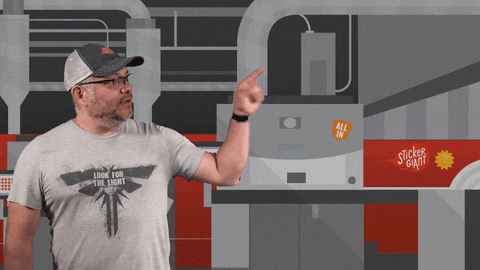
What happens when the people who’ve lived with ad operations pain points start engineering the solutions? Stephanie Layser, Justin Wohl, and Justin Barton are bringing lived experience to the table, reshaping tools around transparency, control, and scale for the sell side.
Did you catch last week’s news? Amazon is building a prebid adapter.
Someone from the AdMonsters community had a hand in making that happen. And it’s the kind of shift we start seeing when publishers stop asking for better tech—and start building it themselves.
Stephanie Layser had been pushing for this kind of change for years, even when it came at a personal cost to her career. But that didn’t stop her. She kept pushing.
At News Corp, she advocated for publisher-first solutions. She was in the ad ops trenches fighting for publisher control, transparency, and flexibility.
Eventually, that landed her at AWS, where she now leads Publisher Ad Tech Solutions.
And that APS Prebid interoperability news? Layser’s sticktoitiveness helped make it happen. While she pushed from the AWS side, Scott Siegler and the folks over at Amazon Publisher Services made it happen. She’s someone who’s seen what’s broken and decided to help build what’s next.
Publishers Taking the Lead
And she’s not alone.
I’ve been speaking with a couple of publishers from the AdMonsters community lately who have stepped into ad tech leadership roles. Reacting to publisher problems was no longer enough for them. They wanted to start architecting solutions.
People like Justin Wohl, who went from being CRO at Salon, Snopes.com, and TV Tropes to VP of Strategy at Aditude. And Justin Barton, who you might know as SVP of Digital Strategy and Partnerships at BlackEnterprise, is now CEO of AdGrid.
What they all have in common is that they weren’t willing to wait for better tools to arrive. They wanted a hand in reshaping the ad tech stack to benefit the sell side. And what benefits the sell side, they all see as a win for the entire ecosystem.
From Operators to Architects
For too long, ad tech sidelined publishers—expected them to plug in, follow the roadmap, and fix what they didn’t break. But, when publishers move from simply operating within the stack to shaping it, the power dynamic changes.
They bring first-hand knowledge of supply chain gaps, auction inefficiencies, data blind spots—because they’ve lived them. And when that experience informs the tech? The tools get smarter. The systems get more transparent.
I’ve been thinking a lot about what it means when publishers start designing the systems they used to struggle within. Layser’s doing it at AWS. Wohl’s doing it at Aditude. And Barton? He’s building a full-stack alternative for multicultural and midsize publishers who’ve been locked out of power for too long.
A Publisher’s POV: Living in the Product
Wohl’s perspective is shaped by years on the front lines.
“I’ve been in the programmatic space for a long time—eight years as a publisher,” Wohl told me recently when he first announced his transition to Aditude. “That entire time was about trying to make the most out of programmatic for publishers.”
Now, he’s doing just that. Aditude’s acquisition of Hashtag Labs gave him the tech he once used to monetize Snopes and Salon. Now he’s bringing it to everyone else.
“I signed myself up to be tapped by the publisher community,” he said. “I’ve enjoyed writing, speaking, publishing—it’s always been about helping the ecosystem. And this new role gives me a way to do that more directly,” he shared.
At Aditude, Wohl is helping build a truly publisher-first platform. And SPO isn’t just an idea. It shows publishers exactly who’s bringing value, and who’s diluting their auction.
“We need buy-side data at the publisher level. Right now, we don’t have a full view of who’s representing us—and what that’s doing to the bidstream,” he said.
Bridging the Data Divide
Layser echoes that sentiment. “There’s a huge gap in how data flows back to publishers. Without visibility into the full demand chain, we’re flying blind.”
She noted that most publishers don’t even know who’s representing them in the auction or how much margin is being taken. “They don’t have access to the bidstream,” she told me on a Zoom call recently. “They don’t know who’s representing them, who’s taking margin, or what’s actually happening in the auction.”
That kind of data opacity, she said, limits a publisher’s ability to optimize—and makes true transparency nearly impossible. Her work now centers on changing that dynamic and giving publishers the clarity they need to take control of their monetization strategy. She’ll share some of those strategies during her keynote at AdMonsters Sell Side Summit in Nashville, August 17-19.
Building Tech with Intention
When Barton acquired AdGrid, he wasn’t just buying a wrapper. He wanted to create scale and control for publishers who’ve long been under-supported by traditional ad tech.
“There was no infrastructure built with multicultural publishers in mind,” Barton told me. “And if there was, it wasn’t accessible or flexible enough to meet their needs.”
As Barton calls it—the first Black-owned full-stack ad ops platform—AdGrid is built with transparency, shared demand, and direct advertiser control. All features that have long been missing from mainstream offerings.
Now, he says, underserved publishers have a way to scale without having to settle for broken workarounds.
“We’re giving publishers access to rich media, self-serve marketplaces, and CTV—not just wrappers. And advertisers get full control. No black box. No guesswork. Just clean signal,” he said.
Systemic Fixes Start with Lived Experience
When publishers sit at the table, the tools reflect real sell-side workflows. Auction data becomes actionable. Transparency becomes a productized reality.
Layser’s push for Prebid compatibility. Wohl’s drive for SPO and data clarity. Barton’s mission to build intentional infrastructure. These are all systemic corrections.
“That’s what I’m building—something so that you don’t have to hire 12 people to run an ad stack,” Wohl said about his work at Aditude.
Publisher-led ad tech solutions enhance monetization, increase transparency, and mitigate historical tensions between publishers and vendors. Advertisers get clearer supply paths and more reliable inventory. Consumers benefit too. They experience fewer annoying ads and receive more support for the journalism and content they trust.
Everyone benefits. There are cleaner auctions, better UX, and more trust between buyers and sellers.
The lesson for the industry? Actual progress comes when those who know the pain points best are empowered to solve them. Ad tech companies should seek out publisher advisors, and publishers should demand a seat at the table.
Layser, Wohl, and Barton are working harder to make it better for everyone. When the sell side thrives, so does the entire ecosystem.
Editor’s Note: An earlier version of this story stated that AWS (Amazon Web Services) made the prebid interoperability happen; it was APS (Amazon Publisher Services).
